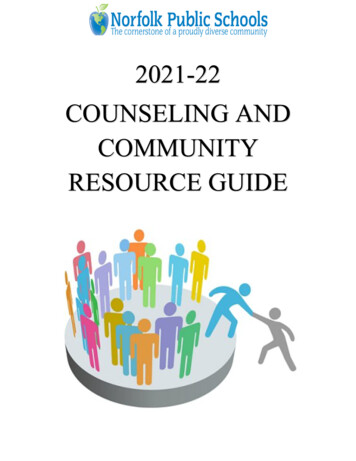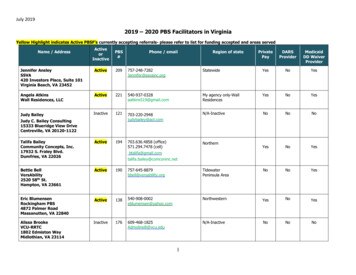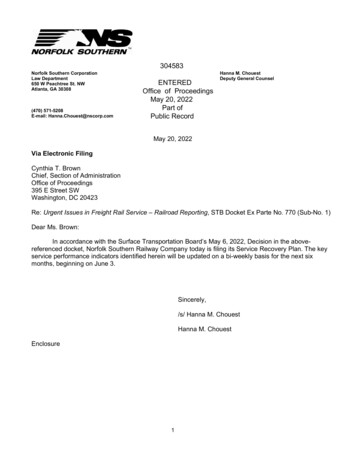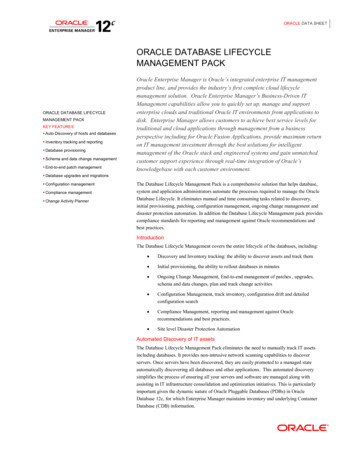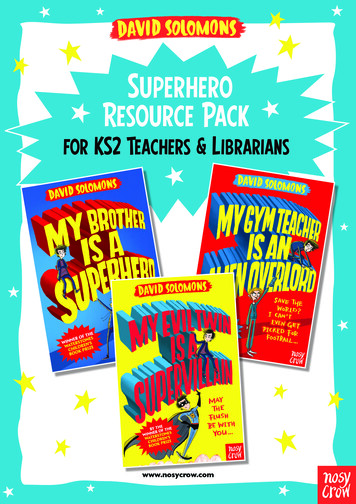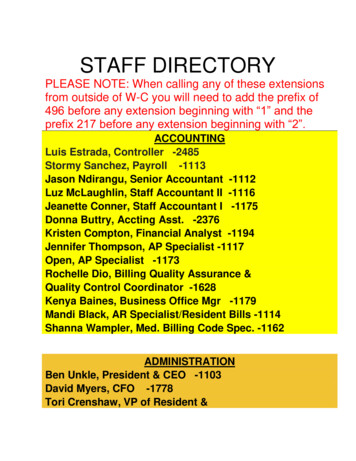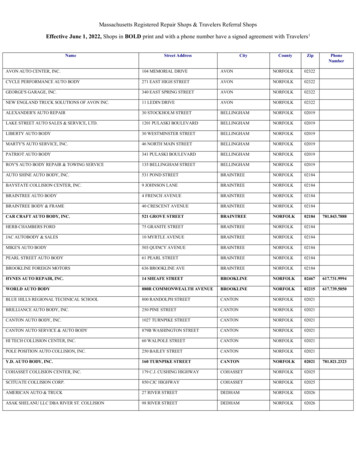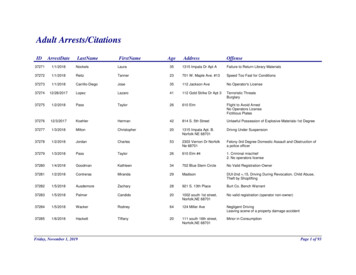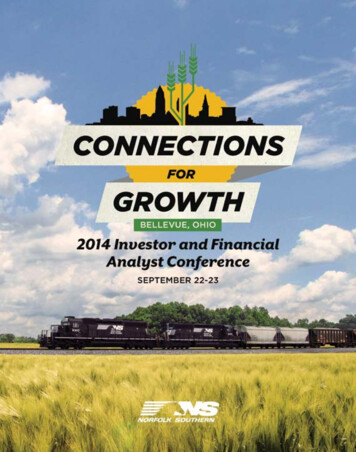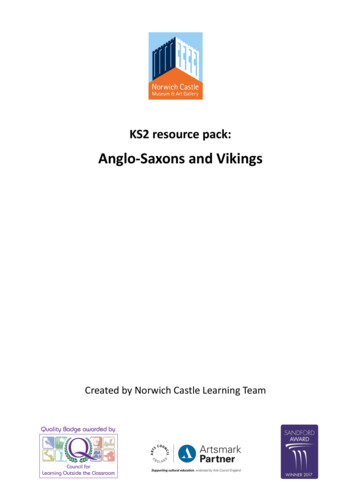
Transcription
KS2 resource pack:Anglo-Saxons and VikingsCreated by Norwich Castle Learning Team
TimelineThe Anglo-Saxon and Viking period covered a huge amount of time! Have a look at this timelinethat shows the most important events of the period. Can you imagine being alive when thesethings were happening?Pretend you are an Angle (from the southern part of Denmark—they settled in East Anglia). Can you writea text message to a friend about some of the events on this timeline as if you were there? We’ve donethe first one as an example.400CE500CEBecause of trouble back in Rome, the RomanArmy leaves Britain.unprotected.Jutes (from Northern Denmark), Angles (fromSouthern Denmark) and Saxons (from part ofwhat is now northern Germany) settle inBritain. They spread out into seven differentkingdoms.Christianity first arrives in England.600CEThe settlement of Northwic emergesas the centre of East Anglia700CEVikings begin to attack. They startby raiding a rich monastery on thenortheast coast of England.The Vikings continue theirattacks and invade East Anglia.800CEAfter many battles with the Anglo-Saxons, theVikings settle and a treaty is drawn up. TheVikings are in charge of East Anglia and most ofthe north, the Saxons rule the south.900CEEngland is united for the first time! The sevenkingdoms had gradually merged, and when the lastking of the Danelaw (the Viking kingdom) dies, hiskingdom joins with the rest and King Aethelstanbecomes the first king of England.1000CE1100CEVikings attack in the north. The Saxon king Harold winsthe battle but, while he is in the north, Normans attackfrom France. The Saxons race south but they lose theBattle of Hastings and William the Conqueror becomesthe new Norman king. It’s the end of Anglo-SaxonBritain.Hey dude! Did u hear the Romans leftBritain. All that good land, loads o space! Isay we should go. We can live like kings! Ru up 4 it?
Roles and Rights in Anglo-Saxon and Viking SocieMen in both Anglo-Saxon and Viking society would generally protect their family, home, village,shire and country. Men would provide for their families through hunting, farming, skilled work, fightingand invasion of other countries (to acquire land, precious metals, fighting equipment etc).Women would mainly be in charge of raising the children. Their children would need to be healthy, strong,obedient and provided with training for their future life. As well as being a strong role model for anychildren, women would also be in charge of providing a clean and tidy home, food on the table, and cleanand well-mended clothing for the whole family. If the man of the family was away for any reason, thewoman would take charge in his place and her authority was totally respected. While the men did most ofthe fighting, she would need to be ready to defend her home and family from attack if that happened. If aman was travelling to take over and settle in new lands, he would take his family with him.Single men and women would provide for themselves.Have a go at the next activity: put a tick in the box if you think a Viking man or woman was able to do eachof these things.Viking womenViking menInherit propertyWear men’s clothesChoose their own husband/wifeRequest a divorceBecome rich and powerfulRun the family farm or businessHave short hairAppear in a court of lawHave a look at the answers and explanations in the answer pages at the back of this booklet. Did anythingsurprise you?Anglo-Saxon men and women had very similar roles to the Vikings. Men and women in Anglo-Saxon timeshad different roles but were valued equally in society. When somebody was hurt or killed in Anglo-SaxonEngland, they or their families would be paid a sum of money by the person who hurt them. This wascalled the wergild and men and women would be paid the same amount.Slavery was normal in these times. People who were captured in battle, brought from other lands or whocouldn’t pay the wergild could be made a slave. Slaves were usually forced to do the hardest and heaviestwork, like hauling water and cleaning out the animal pens. They were not paid but they could be givengifts. If they were hurt, they would not receive any payment (wergild) as other people would have.If you lived in Anglo-Saxon or Viking times, would you rather be a man, a woman, or a slave? Why?
Guess the ObjectHave a look at these pictures. What do you think each object could be? What material is it madeout of? How would it be used? Write your ideas in the spaces with each picture and then check theanswer pages to see if you were right.4.5cmHow many did you guess correctly? If you were choosing items from around your house for people of thefuture (or from the past) to look at and guess what they were, which four items would you choose andwhy?
Viking LongshipsShips were really important to the Vikings. Longships would havebeen used in battle and to transport warriors on voyages ofconquest. Longships were long and light in the water so they wouldbe fast and could move around easily. They had both a sail (usuallya square attached to a tall mast) and oars (up to 50 oars on a verylarge ship), so that they could sail using the power of the wind orrowers. The front, or prow, of the ship would often be highlydecorated with patterns or animals.Can you design your own ship’s prow? Think about the purpose ofyour ship—do you want your ship to look wealthy and powerful orfierce and scary?
RunesBoth the Anglo-Saxons and Vikings wrote using letters called runes. They called their alphabet‘futhork’.Can you work out why it was called this? (Hint: we call our letters the ‘alphabet’ because the first twoletters are called alpha and beta in Greek)Can you ‘translate’ these runes?Why do you think this is? (Hint: we mostly find runes carved into stone or wood)Write your name in runes in the box below. You could also decorate the border with some knotwork likethe design in this picture.
Place NamesThe Anglo-Saxons and Vikings had a huge influence on something that we use all the time —place names!Have a look at the chart below. Lots of places were given a name that described what was there usingSaxon or Viking words. Use a map of your county or country and see if you can find as many examples ofplaces that came from Saxon or Viking names as you can. (We’ve put a few examples in to help you getstarted).Viking InfluenceMeaning-BYFarmstead (some of these farmshave grown into villages andtowns!)-THORPE (also –THROP and –THOP)Secondary settlement (this means asmall settlement just outside abigger settlement)-TOFTA small settlement-BOROUGHFortified placeAnglo-SaxonModern place namesScratby,MeaningModern place namesInfluence-HAMVillage-BURYFortified place (can you hear howsimilar this is to the Viking word‘borough?’)-TONFarm-FORDRiver crossing-WICH (also –WICK)Port or trading placeSwaffham,-STOW (also –STOWE) Meeting place or holy place-LEIGH (also –LEE,Forest clearing-LEY)Some places were named after the people or the leader that lived there. These place names end in –ingsor –folk. For example: Norfolk and Suffolk are people of the north and south in East Anglia, and Hastings isHaesta’s people.
Anglo-Saxon Town PlanningWolfrum wants to set up his new village on this beautiful land. You will find a map and a keybelow. Can you decide where all the buildings should go? Read about who lives in each house and whatthey might need nearby to help you finish the map and help Wolfrum design his new village. Don’t forgetthat as the Thane, or village leader, Wolfrum will need a great hall in the perfect spot so that he can helpall of the people in his village and provide a special gathering place for them. Good luck!1000mThPBTThane—Wolfrum needs a hall in the centre of thevillage with a little grub hut off to one side for hisslave, who will tend to the crops in the fieldsPotter — the potter uses clay to make pots (for cookingand carrying water) and tools like spindle whorls (usedfor spinning). They need access to clay. This potter alsokeeps cows.Bone/antler craftsman—this craftsman makescombs, needles and other fine tools to sell. Theyneed bones and antlers from deer. This craftsmanalso keeps pigs.Tanner—the tanner uses cow skins to make leatherwhich is used for things like bags, belts, and shoes.They need access to water. It is a very smelly job.SWCSmith— the smith gets iron from traders on theroad, and makes nails, horse shoes, buckles, toolsand weapons. The smith needs water close by forquenching and cooling hot fires.Weaver — the weaver turns sheep’s wool into clothby cleaning, spinning, dying and weaving. They needwool from sheep and water for washing and dying.Carpenter — the carpenter makes tools, buckets,furniture, houses and so much more! They make it allout of wood.Space for a cemetery — the village needs a specialplace to bury people after they die. The cemeteryshould be at least 300m away from most of thehouses.What is the name of your new village?
HousingUse words from the box below to fill in the gaps as you learn all about Anglo-Saxon homes and okingdifferentmiddlecoldMost Anglo-Saxon homes were rectangular buildings made of with a thatched roof. Everybodywould live and work in one room (unless you were wealthy and could afford an extra room or two on theside of your house). There would be a at each end of the room but there was no glass, soit would be a small slit rather than a big window, and you might have some wooden shutters to keep outthe . There would also be a raised fire pit in the of the room with either a metaltripod or a chain hanging from a roof beam, to hold your cauldron or cooking pot over the fire. The firewould always be burning to keep the room warm, and also for .The most important building in the whole village was the home of the , sometimes called thelonghall. This would be the same shape as most houses but ! The roof of the longhall (andhouses of richer people) would often be made of shingles – these are like modern-day tiles, but made ofwood, which would be overlapped over the oak beams to keep out the rain and wind. This was muchmore than thatch (reeds and grasses) because it would take around 18,000 shinglesto cover the building, but it lasted longer. Oak beams and willow would be used to makethe walls and then they would be plastered over to fill in the gaps. The inside of the Thane’s longhall wasdecorated with and stories painted in bright colours. The building was bigger than all theothers in the village so that the villagers could meet together under , to talk, plan, tellstories, drink and eat together.The inside of an Anglo-Saxon home would be very from our modern houses.would be very simple and made of wood. Stools would be used instead of chairs withbacks and arms, storage trunks would double up as seating and beds would be very simple flat woodenstructures with animal skins and furs being used as . There was no back in Anglo-Saxon times so they would use tallow candles made of animal fat or very simple oil lanterns. These lightsare not very bright, so you would have to make sure all the jobs that needed good light were completedduring hours.
Clothing and JewelleryThe Anglo-Saxons and Vikings wore different clothes than we do today. They had differenttechnology and so they didn’t use any zips or Velcro! Read through the information below and then see ifyou can identify the different items of clothing on the following two pages. Once you’ve worked out whateverything is, you can colour in the clothes but try and make the colours realistic! If you want to, you cancut out the people and clothes and dress them.Female Clothing CYRTEL — this underdress was ankle-length with long sleeves that were tight on the forearm. Thesleeves were longer than the arm and pushed back, so they look wrinkled. HANGEROC — this was worn on top of the underdress. It was made from a tube of cloth and the lowerhem was wide enough so that when you walked you could stride comfortably. The shoulder straps wouldbe fastened by brooches. Belts were important because at this time people did not have pockets. A smallbag would hang from your belt. HEAD DRESS — it was indecent for a woman to show her hair, so she would wear a WIMPLE. This was alength of fabric which was wound around the head and secured with pins. SHOES — usually these were made from thin leather with thicker leather for the sole. Socks were madeby nalbinding (a bit like crocheting) spun wool. CLOAKS — Women would have worn a cloak, especially when travelling. It would have been fastened bya large sturdy metal brooch.Male Clothing UNDERTUNIC (smoc) — this would be knee-length and made of fine wool or linen. TUNIC — this was usually long-sleeved and knee-length. The sleeves are fairly loose on the upper armbut tighter on the forearm. For those who could afford it, the neckline might be bordered by a band in acontrasting colour. TROUSERS — Anglo-Saxons wore KNEE BREECHES (like a long pair of very baggy shorts reaching the kneeor just below) and LEG COVERINGS (formed by winding a length of fabric around the leg in a tight,overlapping spiral from ankle to knee. CLOAKS — cloaks were square or rectangular, secured with a single brooch, usually at the right shoulder.Cloaks sometimes had an attached hood but a separate hood would mostly be worn. The separate hoodwas called a COWL. SOCKS — socks were made from wool. The end of the sock could cover all the toes together (like amodern sock), be divided into two or sometimes be divided for each individual toe.Colours. The colours of your clothes would change depending on your social status. Natural products wereused to make dye. Dyes that were made of things that were rare and hard to find would be more costly. So low-status people (peasants and slaves) would wear colours like browns (made from tree bark), yellows (onionskins) and other pale colours whereas the very rich would wear stronger colours like deep red, which is madefrom thousands of cochineal beetles!Jewellery—like necklaces, bracelets, rings, and brooches— was worn by both men and women for variousreasons: They believed in many gods - they hoped to get strength, wisdom and/or luck from those gods bywearing different jewellery representing the gods. Practicality. Jewellery pinned together cloaks and held up clothing. Jewellery was worn to show your status in society. The number/size/quality of items showed yourwealth. Jewellery would be made of lots of different materials, including glass, metal, precious stones, wood, shellsand bone.
Viking MythologyDid you know that the words we use for the days of the week come from the Vikings? (That is, all exceptSaturday, which gets its name from Saturn, the Roman God of agriculture.)The Vikings named the days after their gods:Monday – Mani, god of the moon. He rides through the night sky in a horse-pulled chariot, drawingthe moon along behind him.Tuesday - Tyr, god of war. He also represented law and justice, and sacrificed one of his arms so thatjustice could be upheld at all times.Wednesday – Odin (also known as Woden), the raven god. The Allfather, greatest of all the gods. Hewas on a quest for knowledge and even sacrificed one of his eyes so that he could see and understandthe mysteries of the cosmos.Thursday – Thor, god of strength and storms. The son of Odin, Thor wielded a hammer called Mjolnir,and was known for his strength and his bravery. He protected humans.Friday – Frigg, goddess of marriage. She was the wife of Odin and she was very beautiful. She wasgifted with the power to see the future.Sunday – Sol, goddess of the sun. The sister of Mani, she also rides through the sky in a chariot, butshe pulls the sun during the day. She and her brother are always being chased by wolves.The Viking people told wonderful stories about their gods. Can you make up your own story using onlythese characters? Here is an opening line to help you get started:Many moons ago in the frozen lands of the north
More Cross-Curricular IdeasLiteracyMaths Viking weights and measures were very different toours. Can you make a chart showing their units?Maybe you could measure some things using Vikingmeasures. Can you make up some Anglo-Saxon word problems?For example: Hilda has 36 loom weights for her loom,but she wants to make a bigger piece of cloth. Shemakes a loom that is 50% bigger. How many loomweights will she need for the new loom? Imagine you are the curator of a museum. Can youwrite labels for the objects on the ‘guess the object’page. Try and make your label informative but alsointeresting for the public. Don’t forget, if it’s going ondisplay, you must be very careful with your spelling,punctuation and grammar!Find out about the Anglo-Saxon poem ‘Beowulf’. Canyou understand it? What story does it tell? What doyou think? Could you write a review, or maybe an epicpoem of your own?Religious EducationDesign and Technology With adult permission and supervision,can you scratch runes into somewood? Maybe you can experimentwith different stones. How can youmake marks with only materials youfind outside?Can you make some jewellery? Whatcould you use to make it?and VikingsThere is archaeological evidence thatpeople in this period wore symbols oftheir religion. Can you find evidenceof people doing that today? Why dopeople use religious symbols? Can you create the sounds ofan ocean voyage or maybe abattle? What would you use tocreate these sounds?Anglo-Saxons and Vikings didn’twatch TV, so could you makeup a little tune that could behummed or played on aninstrument to cheer people upas they sit around a fire on acold winter’s night?Geography Imagine you are getting readyto leave and settle in a newplace to build your ownsettlement. Find a map (or useinternet maps) to have a lookaround. What features will yoube looking for as you findsomewhere for your newvillage? What do those featureslook like on a map?DramaArt MusicScienceThe Anglo-Saxons and Vikingsdidn’t have electric heating. Canyou do some research on how tostay warm in the winter? Whichmaterials keep you most warm?How could you make a fair test towork out which fabrics make thebest winter clothes?Find out about the Viking belief inthe afterlife (Valhalla). How does itcompare to the Christian beliefs thatbecame more popular after 700CE?Anglo-Saxons Can you design an Anglo-Saxonbrooch or the handle for an AngloSaxon dagger? Use the internet tolook at some examples of realartefacts. You could create a page ofideas and then design your own. Choose a part of the Anglo-Saxon poem ‘Beowulf’ toact out, or write it as a scene of a play. Have a look atsome examples of how plays are written. What stagedirections would you need? Could you take a selfie where you are acting outsome of the different jobs that need doing aroundthe village? Maybe you could show it to others tosee if they can guess what job you are doing.
Roles and Rights in Anglo-Saxon and Viking Society: AnswersViking womenViking menInherit property Wear men’s clothesX There’s very little evidence of womenwarriors, but it was not unheard-of for awoman to dress up as a man to go andfight. However, if a Viking woman did thisshe’d be in more trouble for wearingmen’s clothes than she would be forfighting!Choose their ownhusband/wife Request a divorce Become rich andpowerful Run the family farm orbusinessHave short hairWomen could become rich and powerful,and could be in charge. One example isthe Osberg Queen, a woman buried in abeautifully decorated ship with her manyexpensive possessions back in 834CE. A single woman would do this, and amarried woman would take over therunning of the farm or business wheneverher husband was away.x You might think that everyone fromthat time had long hair—even themen. However, long hair was notalways practical if you spent a lot oftime wearing certain types ofarmour and helmets!Appear in a court of lawXViking women could not appear in a lawcourt, but in Anglo-Saxon society, womencould defend themselves or be a witnessin a court of law.
Guess the Object: AnswersTweezers and a nail cleaner, attached to a loop, forming atoiletry setComb—this comb is made out of a deer antler.It is beautifully decorated.4.5cmThis is a strap end that would go on the end of abeltSpear head—this would be attached to the end of along pole to make a spearThis brooch is called the Harford Farmbrooch. It is made of gold and garnets. Ithas runes scratched into the back that say‘Luda repaired me’. If you look closely atthe bit in the bottom right section, you cansee that it has been repaired! Luda musthave been very proud of the work she did!
Roles and Rights in Anglo-Saxon and Viking Socie- Men in both Anglo-Saxon and Viking society would generally protect their family, home, village, shire and country. Men would provide for their families through hunting, farming, skilled work, fighting

